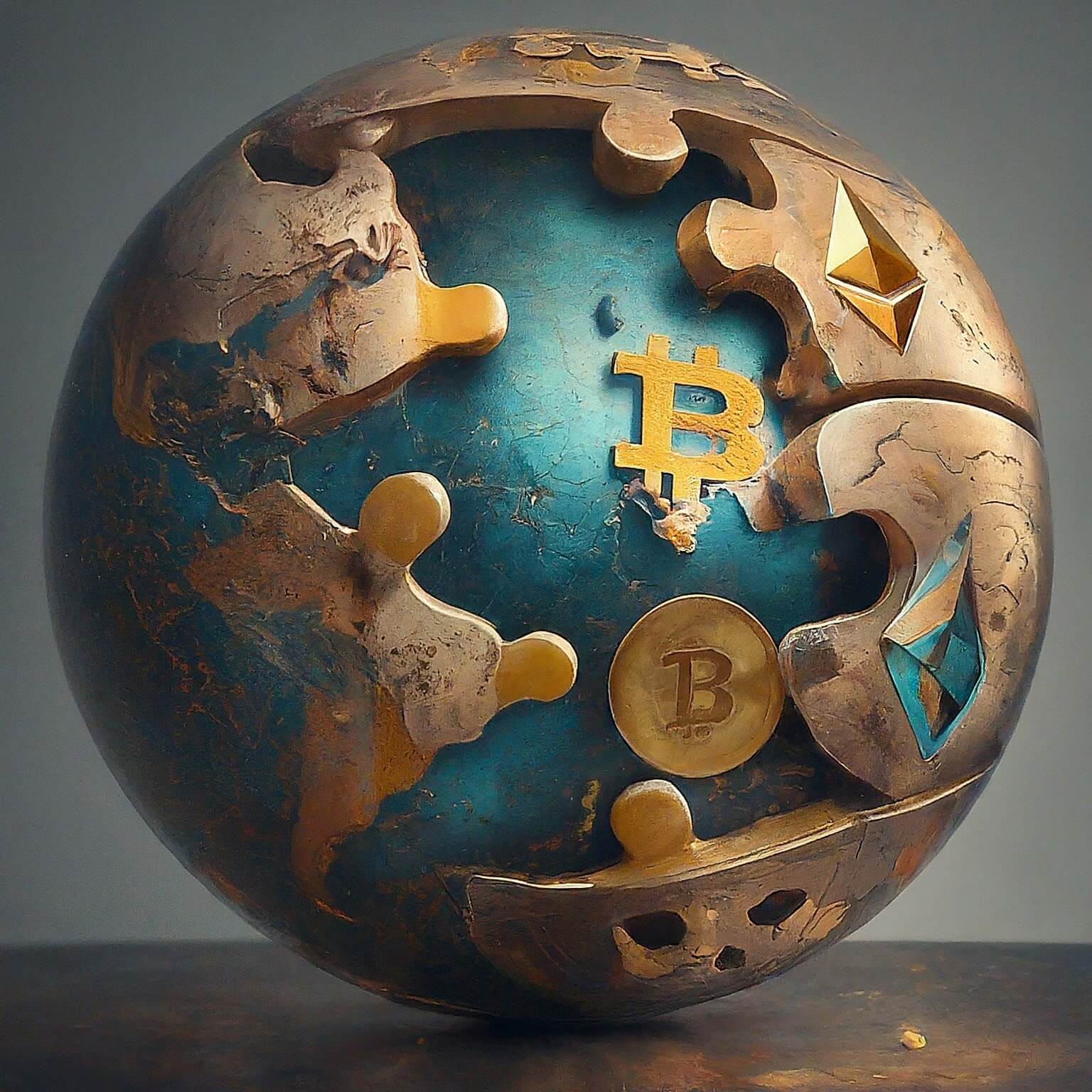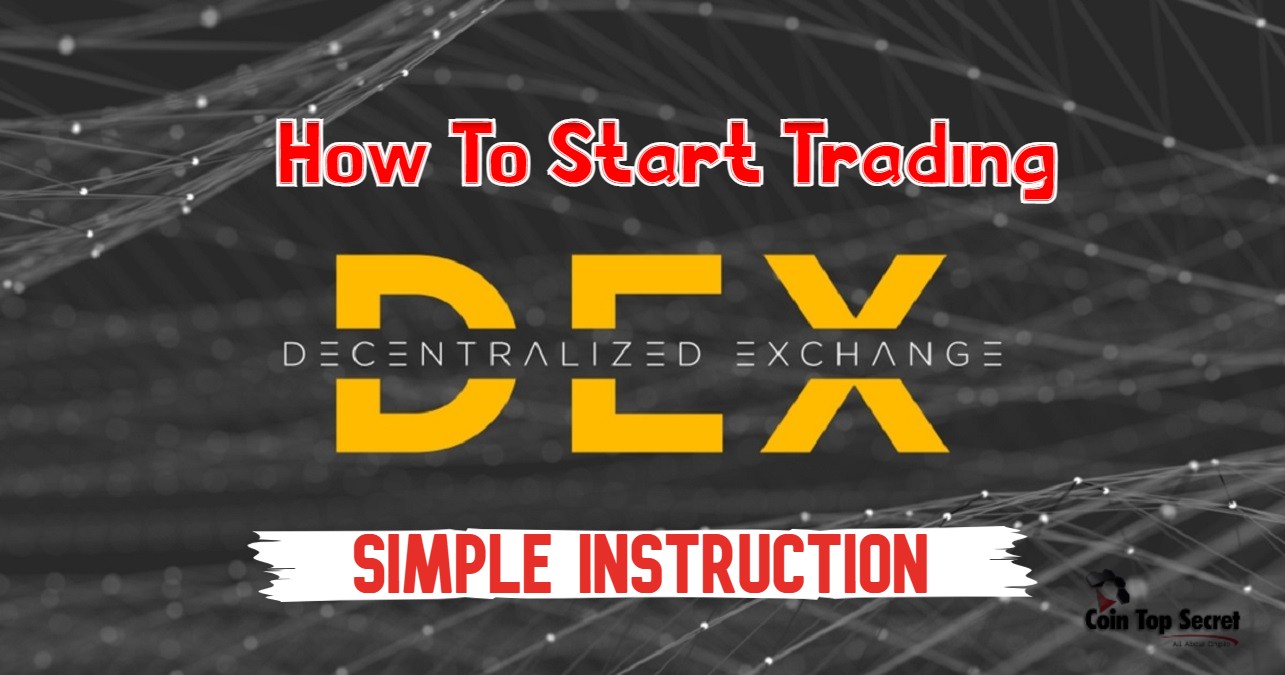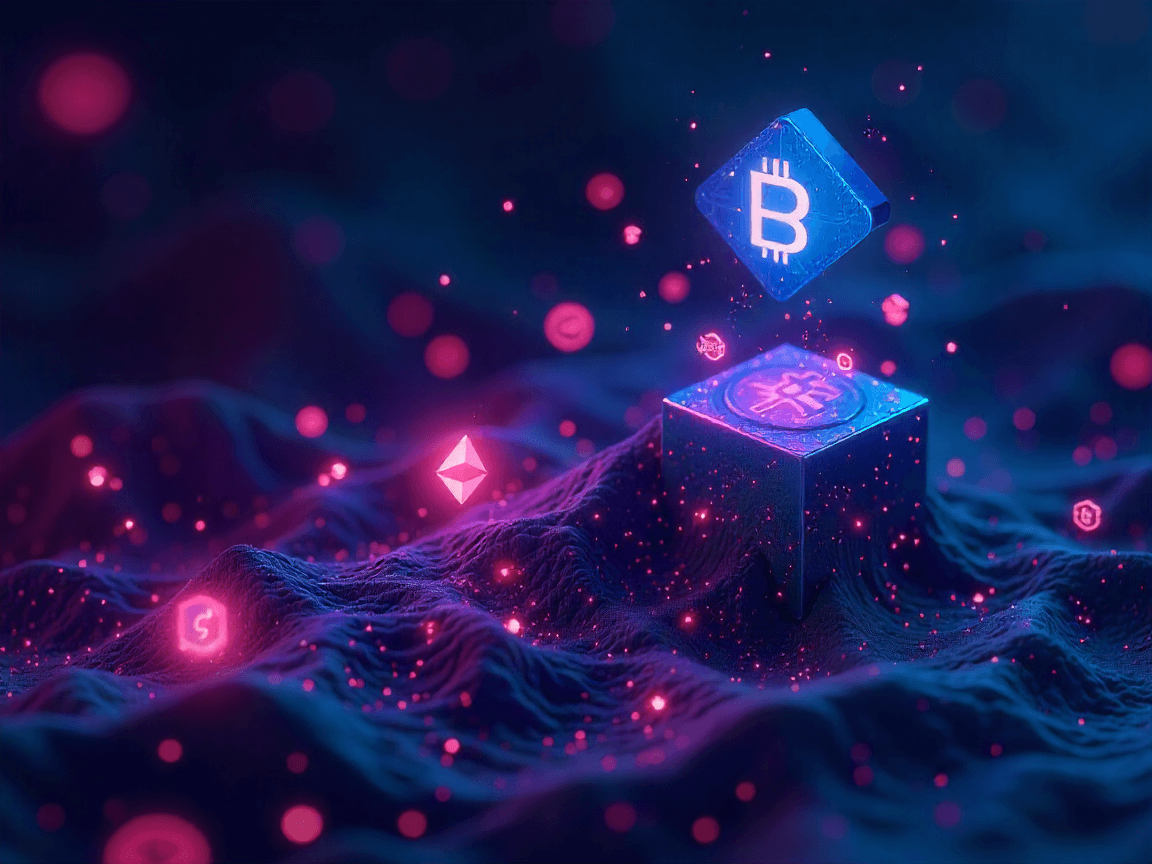The world of digital finance is rapidly evolving, and at its heart lies cryptocurrency. For many, the terms “blockchain” and “Bitcoin” conjure images of complex technology and speculative markets, making it seem inaccessible. But 2025 presents a unique opportunity to truly learn crypto and understand its foundational principles, offering a pathway to navigate this exciting new financial frontier. This comprehensive guide is designed to demystify the blockchain mystery, providing clear, actionable insights for anyone looking to step into the world of digital assets.
Ignoring the rise of crypto is no longer an option; it’s becoming an integral part of the global financial conversation. From remittances to decentralized applications, its impact is widening daily. By breaking down complex concepts into digestible information, we aim to equip you with the knowledge needed to approach this space with confidence. Prepare to learn crypto essentials that will empower your digital journey.
Understanding the Blockchain Basics: The Foundation of Crypto
At the core of every cryptocurrency is blockchain technology, an ingenious system that ensures security, transparency, and decentralization. Imagine a digital ledger that is distributed across a vast network of computers worldwide. This ledger records every transaction, and once a record (or “block”) is added, it cannot be altered or removed. Each new block is cryptographically linked to the previous one, forming an unbreakable “chain.”
This distributed and immutable nature is what gives blockchain its power. It eliminates the need for a central authority, like a bank, to verify transactions. Instead, the network participants collectively validate and maintain the ledger. This not only speeds up processes but also significantly enhances security, making it incredibly difficult for fraudsters to manipulate data.
How Blockchain Works: A Simple Explanation
Understanding the mechanics helps in appreciating its revolutionary potential. When a transaction occurs, it’s broadcast to the network. Miners (or validators, depending on the consensus mechanism) verify the transaction’s legitimacy. Once verified, it’s bundled with other transactions into a new block, which is then added to the existing blockchain.
This process is governed by a consensus mechanism, such as Proof of Work (PoW) used by Bitcoin, or Proof of Stake (PoS) adopted by Ethereum 2.0. These mechanisms ensure that all participants agree on the validity of transactions and the state of the ledger. It’s a truly global and transparent system where every participant can see the history of transactions.
Key Characteristics of Blockchain Technology
Blockchain technology is defined by several core characteristics that set it apart from traditional databases and financial systems. These attributes are what make it suitable for a wide range of applications beyond just cryptocurrencies. Grasping these concepts is crucial as you begin to learn crypto and its broader implications.
– Decentralization: No single entity controls the network. Power is distributed among all participants, preventing censorship and single points of failure.
– Immutability: Once a transaction is recorded on the blockchain, it cannot be changed or deleted. This creates an unalterable history of all activities.
– Transparency: All transactions on a public blockchain are visible to everyone on the network. While identities are pseudonymous (wallet addresses), the transaction data itself is open.
– Security: Cryptographic hashing and the decentralized nature make blockchain highly resistant to tampering and fraud.
– Efficiency: Transactions can be processed 24/7 without intermediaries, potentially leading to faster and cheaper transfers, especially across borders.
Your First Steps to Learn Crypto: Wallets and Exchanges
Embarking on your crypto journey requires understanding how to acquire, store, and manage your digital assets. This typically involves using cryptocurrency exchanges and digital wallets. Think of an exchange as a marketplace where you can buy and sell various cryptocurrencies, much like a stock exchange. A crypto wallet, on the other hand, is where you securely store your digital assets.
Choosing the right tools is paramount for both security and ease of use. As you learn crypto basics, you’ll encounter different types of wallets and exchanges, each with its own advantages and disadvantages. It’s vital to select options that align with your specific needs and risk tolerance.
Choosing the Right Cryptocurrency Exchange
Cryptocurrency exchanges are the primary gateways for most people to enter the crypto market. They allow you to convert traditional fiat currency (like USD or EUR) into cryptocurrencies, and vice-versa. When selecting an exchange, consider factors such as supported cryptocurrencies, fees, security measures, user interface, and customer support.
Leading exchanges offer robust security protocols, including two-factor authentication (2FA) and cold storage for a significant portion of their assets. They also vary in the complexity of their trading interfaces, with some designed for absolute beginners and others catering to experienced traders. Always start with reputable, regulated exchanges to minimize risk.
Understanding Crypto Wallets: Hot vs. Cold Storage
Once you’ve acquired crypto, you need a safe place to store it. This is where crypto wallets come in. A wallet doesn’t actually hold your crypto directly; rather, it stores the private keys that prove ownership of your coins on the blockchain. Losing these keys means losing access to your assets.
There are two main categories of wallets: hot wallets and cold wallets.
– Hot Wallets: These are connected to the internet. They include web wallets (accessed via a browser), mobile wallets (apps on your phone), and desktop wallets (software installed on your computer). Hot wallets offer convenience for frequent transactions but are more susceptible to hacking due to their online nature. Examples include MetaMask, Trust Wallet, and exchange-provided wallets.
– Cold Wallets: These are not connected to the internet, providing superior security. Hardware wallets (physical devices resembling USB drives) are the most common type of cold storage. Paper wallets (private keys printed on paper) are another, though less practical for active use. Cold wallets are ideal for storing large amounts of crypto for long periods. Examples include Ledger and Trezor.
Comparison of Popular Crypto Wallets for Beginners
When you learn crypto, understanding wallet types is critical for security. Here’s a brief comparison of common options:
| Product | Price | Pros | Cons | Best For |
|---|---|---|---|---|
| Coinbase Wallet | Free (app) | User-friendly, integrates with Coinbase exchange, supports many tokens. | Hot wallet risks, less privacy than non-custodial wallets. | Beginners wanting convenience and access to DeFi. |
| MetaMask | Free (browser extension/app) | Widely supported for DApps, strong community, good for Ethereum and EVM chains. | Hot wallet risks, can be complex for absolute novices. | DeFi users, NFT collectors, interacting with Web3. |
| Ledger Nano S Plus | $79 | Excellent security (cold storage), supports thousands of assets, EAL5+ certified chip. | Physical device required for transactions, initial setup can be daunting. | Long-term HODLers, securing significant crypto holdings. |
| Trezor Model One | $69 | Open-source software, strong security (cold storage), simple interface. | Less native coin support than Ledger for some obscure tokens, slightly older design. | Security-conscious users, storing major cryptocurrencies. |
Navigating the Crypto Landscape: Key Concepts and Technologies
Beyond the basics of blockchain and wallets, the crypto world encompasses a wide array of concepts and technologies. To truly learn crypto, you must familiarize yourself with terms like DeFi, NFTs, and smart contracts, which are shaping the next generation of the internet. These innovations extend the utility of blockchain far beyond simple currency transactions.
The ecosystem is constantly evolving, with new projects and ideas emerging regularly. Keeping abreast of these developments will provide a deeper understanding of the potential and challenges within this space. It’s an exciting time to explore how these technologies are decentralizing various aspects of our digital lives.
Decentralized Finance (DeFi)
DeFi refers to an ecosystem of financial applications built on blockchain technology, primarily Ethereum. These applications aim to replicate traditional financial services—like lending, borrowing, trading, and insurance—but without intermediaries like banks. Instead, they use smart contracts, which are self-executing agreements coded directly onto the blockchain.
The promise of DeFi is greater accessibility, transparency, and efficiency. Anyone with an internet connection can participate, regardless of their location or traditional financial status. However, DeFi also comes with risks, including smart contract vulnerabilities, impermanent loss in liquidity pools, and high transaction fees during network congestion.
Non-Fungible Tokens (NFTs)
NFTs are unique digital assets stored on a blockchain, representing ownership of a specific item or piece of content. Unlike cryptocurrencies, which are “fungible” (meaning each unit is interchangeable, like one Bitcoin is interchangeable with another), NFTs are one-of-a-kind. They can represent digital art, music, videos, virtual land, collectibles, and much more.
NFTs have revolutionized digital ownership and opened new avenues for creators and artists. They provide verifiable scarcity and provenance for digital items, which was previously impossible. While the NFT market has seen significant fluctuations, the underlying technology for digital ownership remains a powerful innovation.
Smart Contracts: The Code That Powers Decentralization
Smart contracts are foundational to many blockchain applications, especially in DeFi and NFTs. They are essentially computer programs stored on a blockchain that automatically execute when predefined conditions are met. This eliminates the need for trusted third parties, reducing costs and increasing efficiency.
For example, a smart contract could automatically release funds to a seller once a buyer confirms receipt of goods, or distribute royalties to artists whenever their NFT is resold. They are immutable once deployed, meaning their code cannot be changed, providing a high degree of certainty and transparency to agreements.
Safeguarding Your Assets: Security Best Practices
As you delve deeper into the world of digital assets and learn crypto, security must always be your top priority. The decentralized nature of cryptocurrency means you are your own bank, which brings immense freedom but also significant responsibility. There are no central authorities to reverse fraudulent transactions or recover lost funds if you make a mistake.
Implementing robust security practices is non-negotiable to protect your investments from hackers, scams, and accidental loss. A proactive approach to security can save you from potentially devastating losses. Always remember that the weakest link in security is often the human element.
Essential Security Measures
Protecting your crypto involves a multi-layered approach. Start with the basics and gradually implement more advanced strategies as your holdings grow and your understanding deepens. These tips are crucial for anyone looking to safely learn crypto and thrive in this space.
– Use Strong, Unique Passwords: Never reuse passwords. Create complex combinations of letters, numbers, and symbols for all your crypto-related accounts (exchanges, wallets).
– Enable Two-Factor Authentication (2FA): Always enable 2FA on exchanges and wallets. Hardware-based 2FA (like YubiKey) is superior to SMS-based 2FA, which can be vulnerable to SIM-swap attacks.
– Be Wary of Phishing Scams: Always double-check URLs, emails, and messages. Scammers often create fake websites or impersonate legitimate entities to steal your login credentials or private keys.
– Keep Private Keys Secret: Your private keys are the ultimate access to your funds. Never share them with anyone, and be extremely cautious about where and how you store them.
– Use Cold Storage for Large Holdings: For significant amounts of crypto, a hardware wallet (cold storage) offers the best protection against online threats.
– Backup Your Seed Phrase: When setting up a non-custodial wallet, you’ll receive a seed phrase (a list of words). Write it down accurately and store it in a secure, offline location (e.g., a safe deposit box). Never store it digitally or share it.
– Educate Yourself Continuously: The threat landscape evolves. Stay informed about common scams and new security vulnerabilities.
– Use a VPN: When accessing crypto exchanges or wallets on public Wi-Fi, use a Virtual Private Network (VPN) to encrypt your internet connection.
– Update Software Regularly: Ensure your operating system, web browser, antivirus software, and crypto wallet applications are always up to date to patch known vulnerabilities.
Recognizing Common Crypto Scams
The crypto space is rife with scams targeting newcomers. Being aware of these tactics can help you avoid becoming a victim.
– Pump and Dump Schemes: Promoters artificially inflate the price of a low-volume coin through hype, then sell off their holdings, leaving others with worthless assets.
– Rug Pulls: Developers of a new crypto project abandon it after raising funds from investors, taking all the money.
– Fake ICOs/Airdrops: Scammers create fake initial coin offerings or promise free tokens (airdrops) to entice users to send them crypto or share private keys.
– Romance Scams: Scammers build online relationships, then manipulate victims into sending them crypto under false pretenses.
– Impersonation Scams: Scammers pose as celebrities, support staff from legitimate crypto companies, or government officials to trick you into divulging information or sending funds.
Beyond Bitcoin and Ethereum: Exploring the Altcoin Universe
While Bitcoin and Ethereum dominate the cryptocurrency landscape, they are just the tip of the iceberg. The term “altcoin” refers to any cryptocurrency other than Bitcoin. This vast universe includes thousands of different projects, each with its unique technology, use case, and community. Exploring altcoins can offer diversified investment opportunities and expose you to innovative technologies, but it also comes with increased risk.
As you continue to learn crypto, understanding the diverse range of altcoins can help you identify projects with genuine potential beyond the most recognized names. However, due diligence is paramount; not all altcoins are created equal, and many will not succeed.
Categories of Altcoins
Altcoins can be broadly categorized based on their primary function or underlying technology.
– Stablecoins: Pegged to a stable asset like the US dollar (e.g., USDT, USDC) or gold, stablecoins aim to reduce price volatility, making them useful for transactions and hedging against market fluctuations.
– Privacy Coins: Designed to offer enhanced anonymity for transactions (e.g., Monero, Zcash), concealing sender, receiver, and transaction amounts.
– Utility Tokens: Provide access to a product or service within a specific ecosystem (e.g., Filecoin for decentralized storage, Chainlink for oracle services).
– Governance Tokens: Grant holders the right to vote on proposals and decisions concerning the future development of a decentralized protocol (e.g., UNI for Uniswap, AAVE for Aave).
– Exchange Tokens: Issued by cryptocurrency exchanges, offering benefits like reduced trading fees or participation in platform governance (e.g., BNB for Binance, CRO for Crypto.com).
– Layer-1 Blockchains: Alternative base-layer blockchains that compete with Ethereum, often aiming for higher scalability or lower fees (e.g., Solana, Cardano, Avalanche).
– Meme Coins: Cryptocurrencies often created as a joke or inspired by internet memes, gaining value primarily through community hype and speculation (e.g., Dogecoin, Shiba Inu). These carry extremely high risk.
Researching Altcoins Responsibly
Before investing in any altcoin, thorough research is crucial. Do not rely solely on social media hype or advice from anonymous sources. Here’s a framework for responsible research:
1. Understand the Project’s Whitepaper: This document outlines the project’s goals, technology, tokenomics, and roadmap.
2. Assess the Team: Look for experienced developers, advisors, and a transparent team with a proven track record.
3. Evaluate the Use Case: Does the project solve a real problem? Is there a genuine need for its solution?
4. Analyze Tokenomics: Understand the supply, distribution, vesting schedules, and inflation mechanisms of the token.
5. Examine Community and Development Activity: A strong, engaged community and active development on platforms like GitHub are positive signs.
6. Consider Market Cap and Liquidity: These metrics provide insights into the project’s size and how easily you can buy or sell the token.
7. Check for Audits: For DeFi projects, look for security audits of their smart contracts by reputable firms.
The Future of Decentralization: What’s Next in Crypto
The crypto landscape is not static; it’s a dynamic and rapidly evolving space. As we look towards 2025 and beyond, several trends and innovations are poised to shape the next chapter of decentralization. Staying informed about these potential developments is crucial for anyone who wants to continue to learn crypto and remain at the forefront of this digital revolution. The continuous push for greater scalability, interoperability, and real-world utility will define the future.
New regulatory frameworks are also emerging globally, which could bring more clarity and stability to the market, fostering broader institutional and mainstream adoption. The ongoing convergence of blockchain with other cutting-edge technologies like Artificial Intelligence and IoT also promises fascinating new applications.
Emerging Trends and Innovations
The crypto space is constantly innovating, and several key areas are expected to see significant growth and development in the coming years.
– Web3 Development: The vision of a decentralized internet, where users have more control over their data and identity, continues to gain momentum. Web3 seeks to build applications and services on blockchain technology.
– Layer 2 Solutions: To address scalability issues on main blockchains like Ethereum, Layer 2 solutions (e.g., rollups, sidechains) are becoming increasingly important for faster and cheaper transactions.
– Real-World Assets (RWAs) on Blockchain: Tokenizing tangible assets like real estate, art, or commodities on the blockchain could unlock new liquidity and investment opportunities.
– Decentralized Autonomous Organizations (DAOs): These are organizations governed by code and community vote, rather than a central authority. DAOs are becoming a popular model for managing decentralized projects.
– Interoperability: Projects focused on enabling different blockchains to communicate and exchange data seamlessly are vital for a truly interconnected crypto ecosystem.
– Environmental Sustainability: The crypto industry is increasingly focusing on reducing its environmental footprint, with a shift towards more energy-efficient consensus mechanisms like Proof of Stake.
The Role of Regulation and Adoption
As the crypto market matures, governments and financial institutions worldwide are grappling with how to regulate it. Clear regulatory frameworks are essential for mass adoption, providing investor protection and fostering innovation responsibly. We can expect to see more specific guidelines for stablecoins, DeFi, and crypto taxation.
Simultaneously, mainstream adoption is growing. More companies are accepting crypto payments, financial institutions are offering crypto-related services, and central banks are exploring Central Bank Digital Currencies (CBDCs). This increasing integration into traditional finance signifies a broader acceptance of digital assets.
Embracing the Journey
The journey to understand and engage with cryptocurrency is a continuous one, full of learning and discovery. You’ve taken a significant step by delving into the foundational concepts of blockchain, navigating the essential tools like wallets and exchanges, and exploring the wider ecosystem of DeFi and altcoins. Remember that the digital asset space is both exciting and inherently risky. Prudence, continuous education, and robust security practices are your best allies.
As the world marches towards a more decentralized future, the knowledge you’ve gained will empower you to make informed decisions and participate confidently. Stay curious, stay secure, and never stop learning about this transformative technology. The opportunities for innovation and financial empowerment within this space are immense for those willing to engage responsibly.
For more insights or collaboration opportunities, visit www.agentcircle.ai.
Frequently Asked Questions (FAQ)
What is the easiest way to start with crypto for beginners?
The easiest way to start is by signing up for a reputable centralized cryptocurrency exchange like Coinbase or Binance. These platforms allow you to buy crypto directly with fiat currency, provide custodial wallets, and simplify the process for newcomers.
Is cryptocurrency a good investment?
Cryptocurrency is a highly volatile and speculative asset. While it offers potential for significant returns, it also carries substantial risk, including the possibility of losing your entire investment. It’s crucial to do your own research, understand the risks, and only invest what you can afford to lose.
How do I secure my crypto assets?
To secure your crypto, use strong, unique passwords, enable two-factor authentication (2FA) on all accounts, and consider using a hardware wallet (cold storage) for significant holdings. Always keep your private keys and seed phrases secret and stored offline.
What is the difference between Bitcoin and Ethereum?
Bitcoin was designed primarily as a decentralized digital currency, a store of value, and a medium of exchange. Ethereum, on the other hand, is a decentralized platform that enables smart contracts and decentralized applications (DApps), with Ether (ETH) being its native cryptocurrency used to pay for transactions and computation.
What are smart contracts?
Smart contracts are self-executing agreements with the terms of the agreement directly written into lines of code. They automatically execute when predefined conditions are met, eliminating the need for intermediaries and ensuring transparency and immutability.
References and Further Reading
- Andreas M. Antonopoulos, “Mastering Bitcoin: Programming the Open Blockchain”
- Vitalik Buterin’s Blog: https://vitalik.ca/
- CoinMarketCap Education: https://coinmarketcap.com/alexandria/
- Binance Academy: https://academy.binance.com/en
- Investopedia Crypto Articles: https://www.investopedia.com/cryptocurrency-4427699




